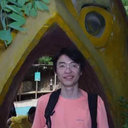Mechanism of protein cleavage at asparagine leading to protein-protein crosslinks.
Raktažodžiai
Santrauka
Long-lived proteins are present in numerous tissues within the human body. With age, they deteriorate, often leading to the formation of irreversible modifications such as peptide bond cleavage and covalent crosslinking. Currently understanding of the mechanism of formation of these crosslinks is limited. As part of an ongoing study, proteomics was used to characterize sites of novel covalent crosslinking in the human lens. In this process, Lys residues were found crosslinked to C-terminal aspartates that had been present in the original protein as Asn residues. Crosslinks were identified in major lens proteins such as αA-crystallin, αB-crystallin and aquaporin 0. Quantification of the level of an AQP0/AQP0 crosslinked peptide showed increased crosslinking with age and in cataract lenses. Using model peptides, a mechanism of crosslink formation was elucidated that involves spontaneous peptide bond cleavage on the C-terminal side of Asn residues resulting in the formation of a C-terminal succinimide. This succinimide does not form crosslinks, but can hydrolyse to a mixture of C-terminal Asn and C-terminal Asp amide peptides. The C-terminal Asp amide is unstable at neutral pH and decomposes to a succinic anhydride. If the side chain of Lys attacks the anhydride, a covalent crosslink will be formed. This multi-step mechanism represents a link between two spontaneous events: peptide bond cleavage at Asn and covalent crosslinking. Since Asn deamidation and cleavage are abundant age-related modifications in long-lived proteins, this finding suggests that such susceptible Asn residues should also be considered as potential sites for spontaneous covalent crosslinking.


